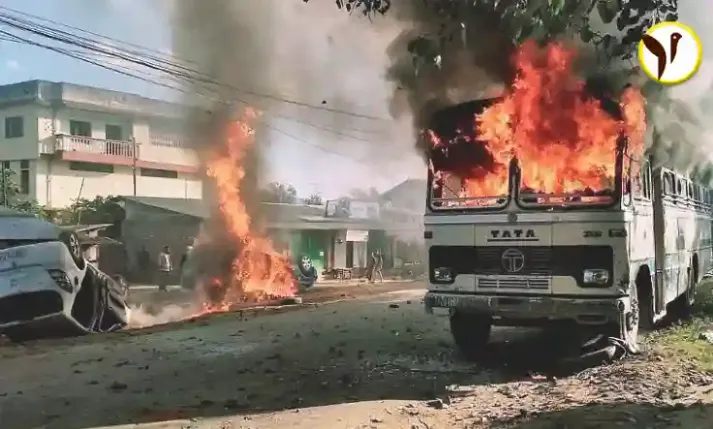The Manipur Crisis in India has been slowly escalating to a dangerous level. The Churachandpur district of Manipur witnessed violence and high tension following a mob attack on an open gym. The mob had burned the chairs at the event venue of the open gym, which was to be inaugurated by Manipur Chief Minister N Biren Singh on Friday.
How Did Manipur Crisis Start?
The Indigenous Tribal Leaders Forum (ITLF) called for an 8-hour total shutdown in the district to protest a government land survey. They also announced non-cooperation with any government programme organised in the district. The "bandh" was scheduled to begin at 8 a.m. on Friday, coinciding with the CM's visit.
However, videos and photos of a mob tearing down the gym surfaced on social media platforms before the shutdown. The mob also burned chairs at the Sadhavana Bhawan, where Biren was to address the public rally. One police officer was hurt, and two demonstrators were detained during the conflict between protestors and police officers.
Demonstrators attempted to assault the event sites, where officials and a large crowd were waiting for the CM, and police deployed tear gas to disperse them.
A night curfew took place in Churachandpur district, mainly in Lamka town, and "Section 144" of the Code of Criminal Procedure (CrPC) was applied, which prohibits gatherings of five or more individuals in one place. By setting fire to a forest range office in the Tuibong district, the violence resulted in the loss of property worth millions of rupees.
Political & Social Causes of Manipur Riots
The root cause of the unrest was the Manipur government’s eviction of people living in the K Songjan village in February as part of a government initiative. The incident highlighted underlying tensions between Kuki tribal bodies and the state administration of the BJP.
The Kuki People Alliance (KPA) condemned the eviction of people living in the K Songjan village under the Henglep sub-division of Churachandpur as part of the government's initiative to protect and preserve protected/reserve forests.
According to the Kuki Inpi Manipur (KIM), the eviction effort violated human rights and was without rehabilitation plans. The ITLF has stated that it would continue to refuse to cooperate with the government until it repeals the 1966 government decree that designated tribal regions as protected/reserved forests.
According to the Kuki Inpi Manipur (KIM), the eviction attempt violated human rights and was carried out without rehabilitation plans. The ITLF has stated that it would continue to refuse to collaborate with the government until the 1966 decree designating tribal areas as protected/reserved forests is revoked.
The government termed the Mnaipur riots - an internal matter of the district and warned stern action against those who are "anti-development and establishment".
The Manipur administration stated that the communal unrest caused considerable pain among Manipuris and that the state and national governments must work together to solve the issue. It is critical to notice the local population's problems and find a peaceful and acceptable solution.
Also, Read Inspiring CA stories of disabled people







